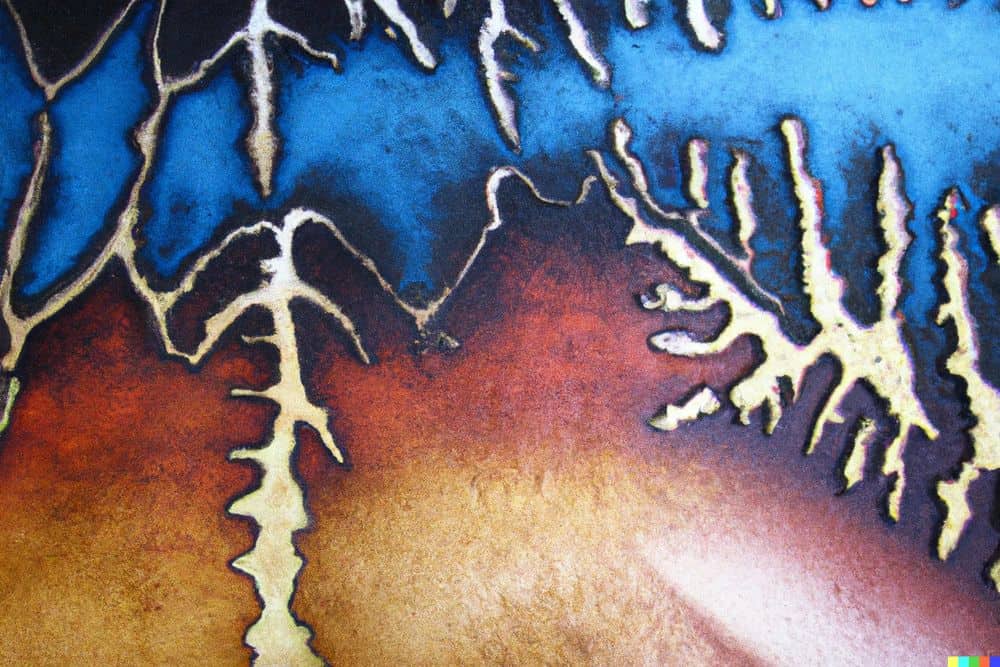Tie-dye is a fun and creative way to add a pop of color to your wardrobe. But did you know that you can also tie-dye leather? So, whether you’re a fashion enthusiast or a DIY enthusiast, this article is for you. Get ready to create some amazing tie-dyed leather items!
How to tie dye leather?
Here is a step-by-step guide on how to tie-dye leather:
- Gather materials: You’ll need leather dye, rubber bands, plastic bags, and a container for mixing the dye. Make sure to choose a dye that is suitable for use on leather.
- Clean the leather: Clean the leather item thoroughly with a damp cloth to remove any dirt or debris. Allow it to dry completely before proceeding.
- Apply rubber bands: Use rubber bands to create the desired tie-dye pattern on the leather. The tighter the rubber bands, the more defined the patterns will be.
- Mix the dye: Follow the instructions on the dye package to mix the dye with the appropriate amount of water.
- Apply the dye: Using a paintbrush or sponge, apply the dye to the leather. Make sure to work the dye into all the crevices of the rubber-banded areas.
- Allow to dry: Place the leather item in a plastic bag to prevent the dye from drying out. Allow it to dry for the recommended time specified on the dye package.
- Remove the rubber bands: Once the leather is dry, remove the rubber bands to reveal the tie-dye pattern.
- Seal the dye: Apply a leather sealant to the dyed leather to help set the dye and protect the leather from wear and tear.
Note: It is recommended to test the dye on a small, inconspicuous area of the leather before applying it to the whole piece, to ensure that the dye will not damage the leather or change the color in an unwanted way.
The above is a general guideline, it is important to read the instructions of the dye you are using and follow the recommended process and precautions.
How to block dye leather?
The first step in blocking dye from leather is to make sure the leather is dry before you apply any sort of treatment. If the leather is damp, allow it to dry completely before applying any sort of treatment.
Once the leather is dry, you can begin to treat it with a leather dye blocker. A leather dye blocker is a product that is applied to the surface of the leather and helps to prevent dye from penetrating the material.
It is important to note that the dye blocker should not be applied directly to the leather, as this can cause staining. Instead, it should be applied to a cloth and then wiped onto the leather.
What kind of dye do you use to dye leather?
There are several types of dyes that can be used to dye leather, including:
- Aniline Dye: Aniline dye is a type of water-based dye that is often used to dye leather. It is considered to be the most authentic and natural type of dye for leather, as it allows the natural grain of the leather to show through.
- Pigment Dye: Pigment dye is a type of dye that is made with a suspension of pigments in a liquid. This type of dye is known for its ability to create a consistent color and finish on leather.
- Acrylic Dye: Acrylic dye is a type of water-based dye that is made with acrylic resin. It is known for its ability to create a wide range of colors, and is often used to dye leather for automotive and furniture upholstery.
- Oil Dye: Oil dye is a type of dye that is applied with an oil-based medium, it is known for its ability to create vibrant colors, and is often used to dye leather for shoes and belts.
It is important to choose a dye that is specifically formulated for use on leather and to always follow the manufacturer’s instructions for the best results and to avoid any damage to the leather.
Can you use tie dye on leather?
Yes, it is possible to use tie-dye techniques on leather. The process is similar to tie-dying fabric, but there are some important differences to keep in mind.
When tie-dying leather, it is important to use a leather dye that is suitable for the type of leather you are working with, and to follow the manufacturer’s instructions for application. The leather must be clean and dry before dyeing.
Rubber bands or string can be used to create the tie-dye pattern on the leather. The tighter the rubber bands or the more string you use, the more defined the patterns will be. Once the dye is applied and allowed to dry, the rubber bands or string are removed to reveal the tie-dye pattern.
It’s important to keep in mind that the final result may be different from the one on fabrics due to the characteristics of the leather, so it’s recommended to test the dye on a small, inconspicuous area of the leather before applying it to the whole piece, to ensure that the dye will not damage the leather or change the color in an unwanted way.
It is also important to seal the dye after the leather is dry to help set the dye and protect the leather from wear and tear.
